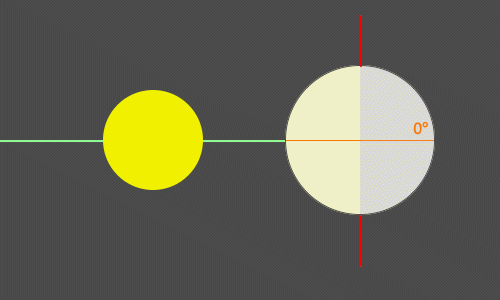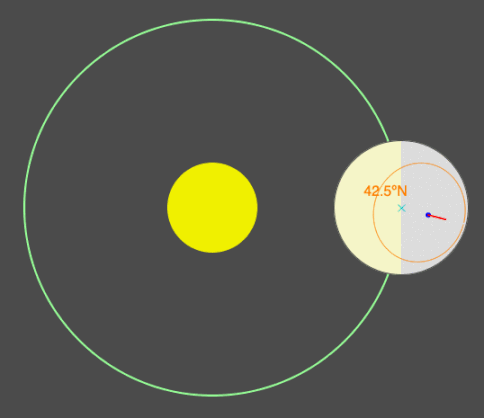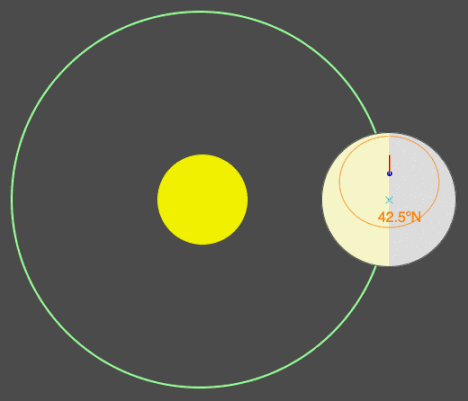Star-Planet Connection
Changing Orbital Parameters
All bodies gravitationally attract other entities with mass. The gravitational pull between two objects is proportional to the product of the mass of each object and inversely proportional to the square of the distance between the bodies. This gravitational attraction keeps a planet in orbit around a star, but rarely is a single planet orbiting a star. Like our solar system, there will be multiple planets orbiting a star, which means the distances and directions between these massive objects are always changing. The changing direction and amount of pull acting on a planet cause the planet’s orbit to change over time. To add to the complexity, an orbiting moon(s) pulls the planet in ever-changing directions. The combined effect of changing intensities and directions of pull creates cyclical changes in a planet’s orbit, including Earth’s. Three orbital parameters that change are obliquity, eccentricity, and precession.
Color Key for the Following Animations
- Green is the planet’s orbit,
- Red is the planet’s axis of rotation,
- Cyan is the line perpendicular to the planet’s orbit that goes through the center of the planet,
- Orange is a latitude circle,
- Bright yellow is the star,
- Light yellow is the illuminated part of the planet, and
- Light gray is the shaded part of the planet.
Obliquity

Obliquity is the angle between the planet’s equatorial plane (shown in orange and labeled 0°) and its orbital plane (green line). Another way to think about it is the angle of the planet’s axis of rotation (red line) from the perpendicular to the plane of the orbit (cyan line).
Eccentricity

Eccentricity is the deviation of a planet’s orbit from circularity. The greater the eccentricity, the greater the elliptical nature of the orbit. Note that the star will be located at one of the two foci of the ellipse.
Precession

Precession is the gradual change in the orientation of the planet’s rotational axis (red line). Think of the wobble of a spinning top. The gravitational pull of the Sun and the moon on the spinning Earth creates its precession.
Big Ideas
- The gravitational pull between two objects is proportional to the product of the mass of each object and inversely proportional to the square of the distance between the bodies.
- Since the planets and moons are moving, the gravitational pull acting on a planet is constantly changing, which creates cyclical changes in the planet’s orbit, including Earth’s.
- Three orbital parameters that change are obliquity, eccentricity, and precession.

0 Comments